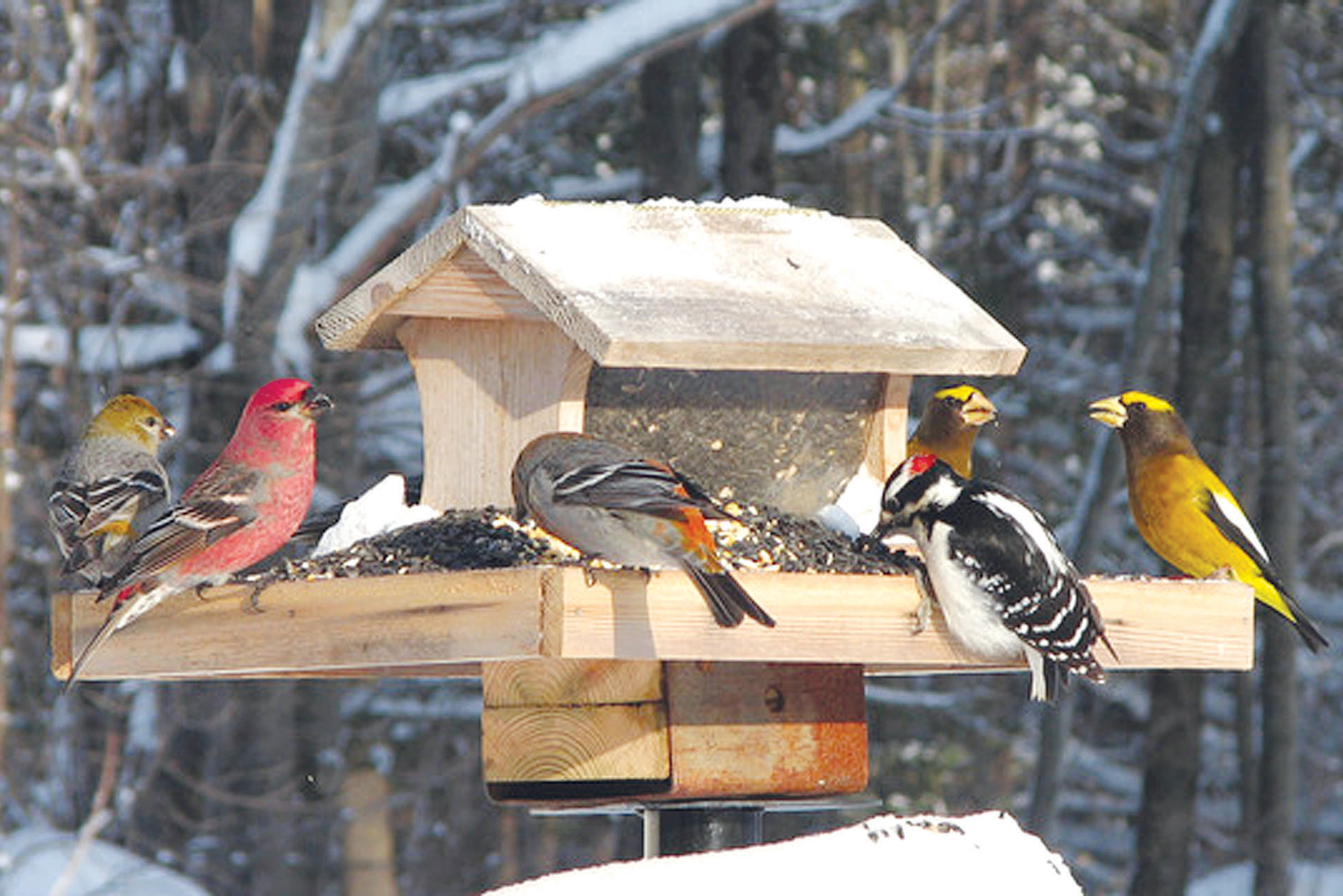Winter feeding can cure your blues – and theirs For the birds

By Sara Scudier
Ohio certified volunteer naturalist
Backyard bird watching can be a cure for the winter blues and a sign that spring is just around the corner.
By feeding birds we bring them closer to our homes.
Their colorful, lively company brightens up our lives, especially through the dreary days of winter.
Setting up a backyard bird feeder can make birds’ lives easier, as winter in much of North America is a difficult time for birds.
Finding food and water can be especially challenging during periods of extreme cold.
Different species of birds prefer different types of seeds and feeders, and no one type is preferred by all birds.
The ideal bird feeder is sturdy enough to withstand winter weather and squirrels, tight enough to keep seeds dry, easy to assemble and, most important of all, easy to keep clean.
feeders
Tray or platform feeders are simply flat surfaces on which you spread seed. Placed near the ground, they are most likely to attract ground-feeding birds such as juncos, doves, jays, blackbirds and sparrows (along with squirrels, deer, raccoons and other critters). Some models have a roof to provide some protection from the weather. They should have drainage holes for water and need to be cleaned often.
A hopper feeder looks like a house with Plexiglas sides on top of a platform where the seed is dispensed as birds eat it. They are attractive to finches, jays, cardinals, buntings, grosbeaks, sparrows, chickadees and titmice. The seed is protected against the weather but not so well against squirrels.
Tube feeders are hollow cylinders with multiple feeding ports and perches. They keep seed fairly clean and dry and, if they have metal feeding ports, may be somewhat squirrel resistant. They attract small birds such as chickadees, titmice and finches.
seeds
The type of seed matters. Cheap isn’t always better. Picking different types can attract the birds you are more interested in viewing from your favorite spot inside the house.
Black-oil sunflower seed attracts the greatest variety of birds. It has a high meat-to-shell ratio and a high fat content. It’s small and thin-shelled, making it easy for small birds, such as the cardinals, juncos, chickadees, nuthatches and titmice to handle and crack.
Striped sunflower seeds are larger with thicker seed coats and appeal to cardinals and blue jays.
Niger or thistle seed attracts goldfinches, house finches and purple finches.
Peanuts attract blue jays, chickadees, titmice and woodpeckers.
Many ground-feeding birds like doves prefer white millet or red milo.
Mixes of several different seeds offer an alternative and attract a number of different species.
Avoid mixtures that contain red millet, oats, and other “fillers” as they are not attractive to most birds and can lead to a lot of waste as the birds don’t eat them
location
Set up your feeder in a quiet place where it is easy to see and convenient to refill.
The feeder should be close to natural shelter (cover) such as trees or shrubs, which offer refuge to birds as they wait their turn to feed.
Evergreens are ideal – their thick foliage buffers winter winds and offers year-round hiding places from predators
Low winter temperatures can mean a time of drought for birds that makes water particularly attractive to birds in winter. Heaters to keep the water from freezing are available at stores that sell bird-feeding supplies.
For details on winter feeding, visit go.osu.edu/birdfeedingbasics.
 43
43
